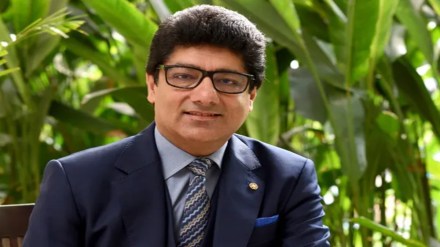Indian Hotels Company on Monday signed agreements to acquire controlling stake in ANK Hotels and Pride Hospitality, adding 135 hotels to its portfolio that now touches 554 hotels under various brands. As the new properties will be rebranded as Ginger hotels, IHCL managing director and chief executive officer Puneet Chhatwal speaks with Ivinder Gill on expanding the Ginger brand, and what the consolidations bode for the industry. Edited excerpts:
You have said Ginger will be the growth driver for IHCL, giving 10% revenues by this fiscal. With this buy it will be a 241-hotel brand. By 2030, how big will the brand be, and what share of revenue do you expect from it?
By the coming Monday we will add 10 more hotels, crossing 250 properties under Ginger. We are entering into a partnership with a south-based brand for 10 more properties. ANK, Pride and Brij are largely north-based brands.
By 2030, Ginger should provide 15% of revenues of IHCL, crossing 300 hotels. We need more hotels like the one at Mumbai airport and Kolkata airport that Tata Sons bought for us. Nagpur, Patna, Mopa Goa are more key markets on a revenue share model.
We want to find the right balance of scale and profitability and not just the number of hotels or rooms. However, acceptance of a brand and its visibility do not happen if it does not have a significant presence. So finding the right balance of margins, size of portfolio and return on capital is a must, as is a focus on free cash flow and net debt zero. We cannot just blindly look at scale.
Will you rebrand all the newly-acquired properties from ANK and Pride as Ginger?
We don’t want to start a new class brand now, so majority of them will be converted into Ginger. There might be 5-10% properties that won’t fit in because every property will not have the same governance standards as a listed company.
You say the new buys fill the gap in an under-served mid-market segment. By 2030, how big do you think the branded hotel segment will be from the around 35% today?
The unbranded segment will go down by maybe 20% with the current rate of consolidations. It never differs significantly as India is a complex market with different economic factors in play. Guest houses and villas abound all over the country. Some are not in good condition, some may not even have certificates or safety standards, and big brands cannot be involved in such properties. Such supply will always be there. But regional players will get consolidated into bigger players, and our latest acquisition is the best example of that. And this wave of consolidation bodes well for the industry.
The focus on midscale is a firm nod to the power of domestic tourism. How do the leisure, business and religious tourism segments stand?
I would say one-third each. But considering that spiritual also comes under leisure, leisure will have a 60% share and business 40%. However, revenues will be different, with business travel giving 65% and leisure around 35% of the revenues. Cities like Mumbai and Delhi have higher average rates and occupancy. Scale versus revenue is a very different game.
Are there more properties like Kolkata airport that Tata Sons is buying for you?
Nothing is in the pipeline for now, but it is nice to have another source of money. We always had a platform with GIC (Singapore-based sovereign wealth fund) that we never really used. But the opportunity to use GIC or Tata Sons is always there, besides our own money. We will keep doing whatever makes sense and not rely on just one source of capital, whether internal or external.
You are already tapping airports as hotspots for hotels. Any focus on highway tourism?
Ginger will be important for even highway tourism, with stretches like the Delhi-Mumbai highway as good locations. We already have Ginger hotels at Mopa Goa, Mumbai, Kolkata and Cochin airports, with one at Bengaluru airport next.
When it comes to overtourism and unregulated construction, which is a major reason behind ecological disasters in the hills, do you think takeovers and management control by brands can check this menace?
At IHCL, we have always focused on profitability to be sustainable growth, not believing in quantity only. But government policy matters in development of hotels — how much to build and where. And tourism is a state subject, so needs and wants differ from each state. But some guidance must come on sustainability. The good news is, everyone is talking about it. We have to see how we execute it in terms of policy.
